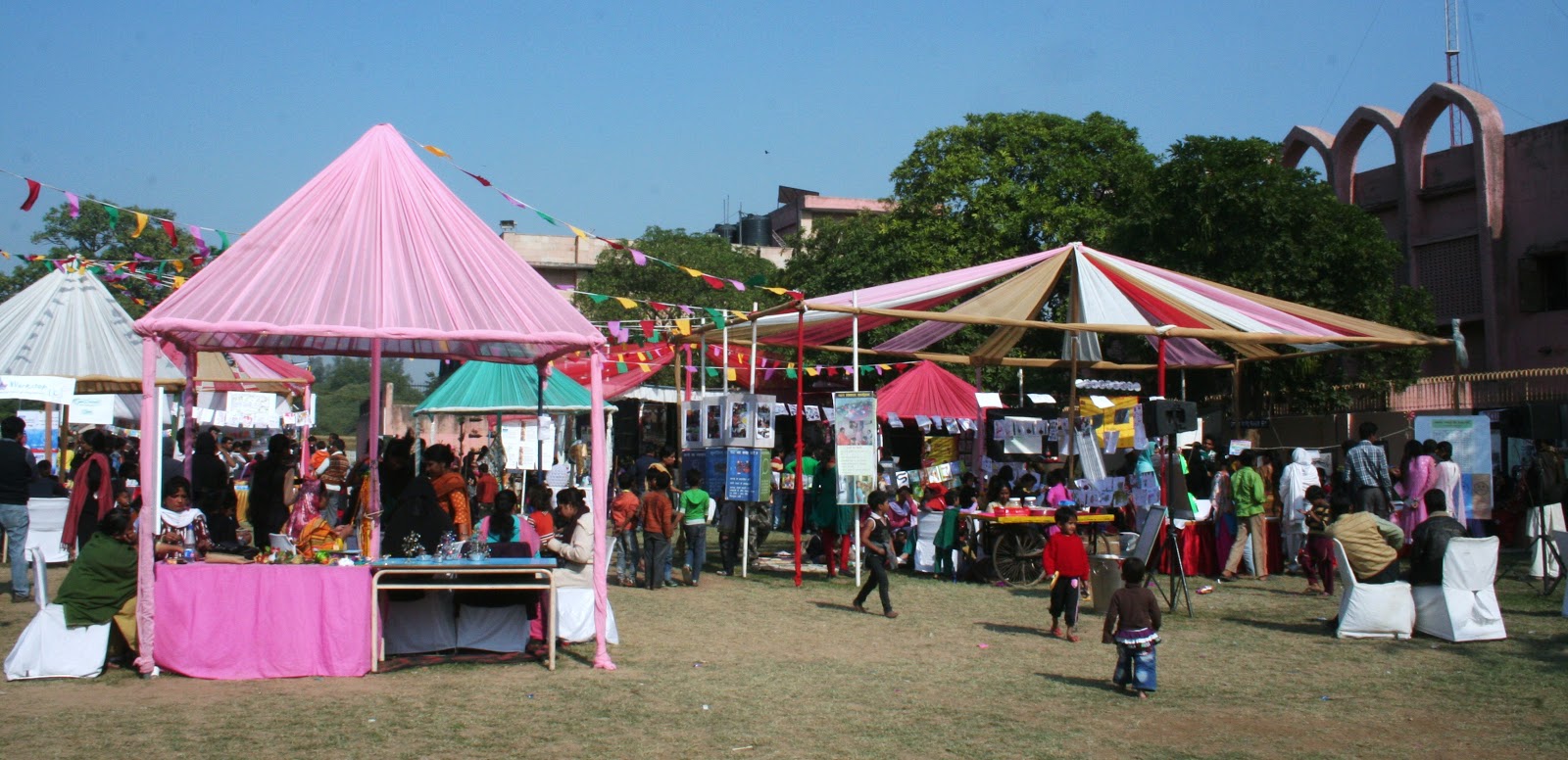The poster of Apni Basti Mela 2012
mausoleum complex also is the last resting place of Hazrat Nizamuddin's disciple and renowned sufi poet
Amir Khusro.
Exquisite art of Arabic Calligraphy on display at the Mela
Local children participating in Educational games
Mazaar of sufi poet Amir Khusru
"When nothing was, then God was there
Had nothing been, God would have been;
My being has defeated me
Had I not been, what would have been"
The master Kebab shop - Ghalib Kebab Corner, winner of kebab festival organised by Hotel Maurya
Sheraton, serves mouth watering and succulent buff kebab served with mint chatni and shallots.

Kebab's skewered on barbecue.
Succulent Kebab's - mouth watering
Last resting place of the greatest Urdu poet - Mirza Ghalib is located in the basti

Stalls of Rose sellers are lined on both side of the alley leading to the Dargah entrance
The Dargah courtyard.
World Heritage site and has been painstakingly restored through generous efforts of the Agha Khan
Trust for Cultural
The Mela thoughtfully conceptualized by a team of enterprising folks under the able stewardship of Ratish Nanda of Agha Khan Trust with generous collaboration of the Archaeological Department, Ministry of Culture, Govt of India and the residents of the basti very emphatically tells us that even a local community initiative in a mega city can be a destination for discerning traveler.
The Mela ground wore a festive look
The 3 day mela this year aimed to encourage outsiders to participate and integrate with the basti residents in order to understand and respect the 700 year old living cultural heritage of the basti Nizamuddin. Heritage walks curated and led by the group of talented local youths, craft demonstrations - calligraphy, Sanjhi - the paper craft, embroidery and crochet work, wood crafts, perfumes, theatre, Qawwali and Dastangoi performance, cuisine and cooking classes by the local chefs were part of the fair.
Sanjhi - the paper cutting craft developed and practiced by the basti dwellers has generously borrowed
the motifs from the nearby Humayun's Tomb which now adorns note books, planners, greeting cards and
even lamps.
The Niazi brothers performed during the concert of sufiana kalaam in the forecourt of the gem of a mausoleum - Chausath Khamba. On the last day the famed duo of Mahmood Farooqui and Danish Husain enthralled an eclectic audience with dastan-e-Chaubuli, a Rajasthani folk tale narrated in their classic style in the chaste Urdu. The audience could not have asked for a better finale for the Apni Basti Mela.
The magnificent backdrop of Chausath Khamba was the ideal stage for a performance of Dastangoi
Mahmood Farooqui (right) and Danish Husain (left) performing Dastangoi
Hazrat Nizamuddin basti can rightfully claim to be the cultural hub of New Delhi. It boosts of being the abode of Humayun Tomb, a UNESCO world Heritage site, mausoleum of the great sufi saint Hazrat Nizamuddin, the sufi poet Amir Khusru and the greatest Urdu poet of all times - Miraz Ghalib. The basti does not only dwell in the past but also has a beautifully laid out Sundar Nursery which is undergoing transformation under the Agha Khan Trust for Culture, once ready this would be the place for evening soirees and fine dining.
This basti certainly has a bright future and could well become a prototype for future development of similar culturally rich zones in the city and the country.















No comments:
Post a Comment